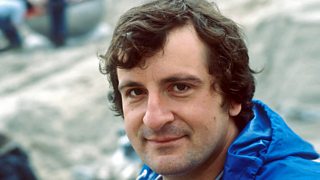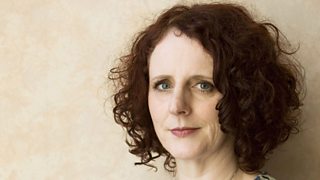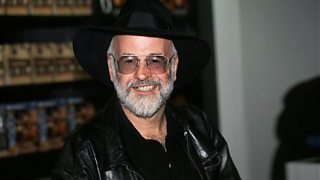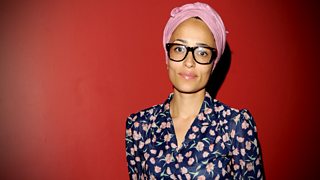Nine things we learned from Neil Gaiman's Desert Island Discs
Neil Gaiman is a multi-award winning author whose work includes the novels Stardust, American Gods and The Graveyard Book and the comic book series The Sandman. His first novel, Good Omens, written with Terry Pratchett, was published in 1990, and Neil recently adapted it as a TV series starring David Tennant and Michael Sheen. He specialises in creating fantastic alternative realities which exist under the nose of the world as we know it. He recently told his 2.8 million Twitter followers that he wore his ‘lucky Batman underpants’ for his Desert Island Discs recording – and here are nine things we learned from the programme:
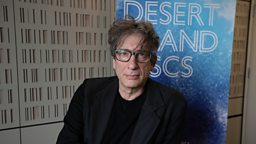
1. The source of his childhood fears is also the source of his success as a writer
Neil recalls that he was often scared as a child - so what frightened him? “You name it, what have you got?... Definitely the dark. Shadows, witches - anything that really did exist, and anything that didn't. I used to genuinely envy kids who didn't have imaginations, who weren't populating the shadows with things. I knew I couldn't switch it off.” With the benefit of hindsight, he now acknowledges the importance of his imagination: “I thought of it as my big weakness and did not realise that one day when I grew up that it would be my superpower.”
2. School sport was also a nightmare
“I was the kid who could never score a goal or a run,” he says. “I was very good at dropping balls, and I was also very, very good at daydreaming on a football pitch, until something large, wet and leathery hit me in the side of the face, and people shouted because I should have been paying attention. And wherever I was, I wasn't really there.”
3. Books were his best friends as a child – and his constant companions
“I wasn't very good at friends as a kid. Books didn't let you down. Books wouldn't make fun of you. Books were sensible,” says Neil. “I definitely felt like an outsider, and I probably was.”
Before family gatherings, Neil’s father would often try to check that his son wasn’t trying to sneak a book or two in with him, so that he could disappear into a corner and read.
“My dad, always my dad… would literally pat me down because I had been known to hide books under my jumper and he would lock them in the car. And it never really worked, because wherever we were, I could normally find something to read. It just wouldn't have been what I wanted to read, but suddenly… I'd be off in the corner reading The Joys of Yiddish by Leo Rosten or something, because it was the book that I found.”
4. His daughter Holly owes her name to one of his music choices
Neil recalls how Holly, when she was at college, remembered how they used to listen to music together when she was a child, “and she said to me ‘I wish you’d play me some of those songs that used to be on playlists and on cassettes when we'd go for a drive. What about Walk on the Wild Side, you used to play that?’
“And I said, ‘Yes, in fact, you were named after that.’ And I played her Walk on the Wild Side. And as it finished, she looked at me and she said, ‘So hang on. I'm named after a trans person in a Lou Reed song?’ So I said, ‘Well, yes. Yes, you are.’ And she looked at me and she said ‘Oh Dad, I do love you.’”
5. A furious child inspired his first book for younger readers
Neil published The Day I Swapped My Dad for Two Goldfish in 1997.
“The idea, like most of my children's books, was stolen from one of my children,” explains Neil. “In this case from my son, Mike, and he would have been four, maybe five years old. I'd said something to him that he didn't like, like possibly suggesting to him that it was actually his bedtime.”
“And he looked up at me with a fury that only a small boy can generate, a special kind of fury and he just said, ‘I wish I didn't have a dad’. He said, ‘I wish I had....’ And then he paused because he hadn't thought that through and, and then he said, ‘I wish I had goldfish!’ And he stomped off while I just thought ‘That is brilliant!’”

6. His children were also the driving force behind his 2002 children’s novella Coraline
“I started it for Holly, when she was about four or five years old, because those were the stories that she would tell me!” says Neil.
I looked at myself one day and I thought 鈥楤lack t-shirt, black jeans, black sweaters, black jackets, you don't really ever have to worry about what you're going to wear in the morning'
“She'd come home and make up these nightmarish stories about little girls having their mothers kidnapped by evil witches, who would pretend to be their mothers, and then imprison the little girls. Then they'd have to escape and I thought, ‘This is what she likes, I'll write her one.’
“And I started writing it, showed it to my then editor, a lovely man named Richard Evans. And he said, ‘It's wonderful’. He said ’It's one of the best things you've ever written! It's unpublishable!’ And I said, ‘Why is it unpublishable?’ He said, ‘Well, you're writing something aimed at both children and adults. And I don't know how anybody could publish that: It's horror for children, and that's not publishable.’ Before people make fun of him, in the context of 1991 he was absolutely right.”
“I stopped writing it for some years and then one day, I looked around and realised that Maddie was four years old - the same age that Holly had been, I thought, ‘Well, if I don't finish this book, she'll be too old for it, too.’ So I got down to work and finished it.”
7. Neil has only worn black since his late 20s – but it’s not as simple as it sounds
“I looked at myself one day and I thought ‘Black t-shirt, black jeans, black sweaters, black jackets, you don't really ever have to worry about what you're going to wear in the morning’”, Neil recalls.
“The only problem really is if you're living out of a suitcase and everything is black. You're grabbing things and holding them up to the light to try and figure out where the underpants or the socks are.”
8. As a child he prepared himself for life marooned on a desert island
“I read Robinson Crusoe at a very young age, and Swiss Family Robinson and several other of those books,” says Neil, “so I think I assumed by the time I was seven or eight that at some point in my life, I would definitely get cast away on a desert island.”
“I used to make sure that I travelled with a tiny book that I picked up in a second-hand shop called Survival, which was the US Air Force guide to surviving if you were shot down, whether it was on Arctic tundra, or on a desert island or in Africa or whatever. It showed you how to harvest breadfruit.”
“I will always get lonelier than I think I'm going to get, but I also love the idea of getting down to work on my own schedule. And assuming that there is recognisable breadfruit and so forth I think I'll be OK.”
9. He and his wife Amanda Palmer have natural boundaries in their open marriage – but they’re not in the same place
Neil married the singer and musician Amanda Palmer in 2011, and both have spoken honestly about the nature of their relationship, although Neil says this isn’t always easy:
“I think she’s had to pull in from where her natural boundaries would be,” he says, “in which she would love to be telling everybody everything, and I’ve had to walk several hundred yards beyond where my boundaries end into a world of going ‘OK, well I guess I’m going to have to talk about this stuff… and I don’t really want to talk about it, but Amanda is, so I have to too.’ And I think overall looking back on the last 13 years we’ve been together, I'm really glad that we did, because I think it's probably very good for me to be dragged out of my comfort zone over and over.”


